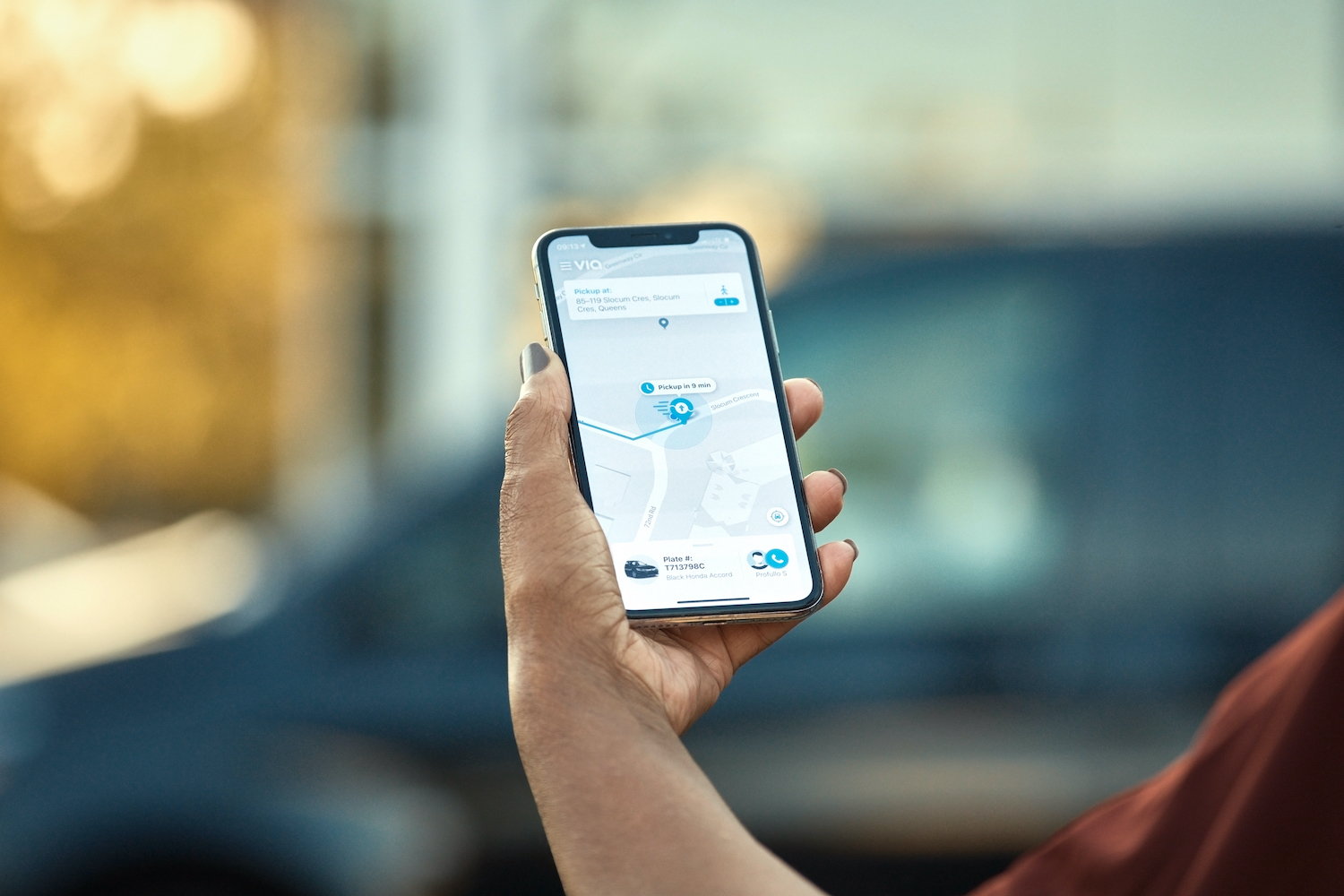
Creating accessible, effective public transportation is a major challenge for local governments. Areas that don’t provide sufficient options to meet the needs of disadvantaged and transit-dependent residents, known as transit deserts, are all too common. This is especially true in rural areas, small towns and even residential zones outside of a core city. But cities are not immune.
Where mass transit falls short, workers, seniors, people with disabilities, and those who don’t drive or own a vehicle are left scrambling to get where they need to go. Via Transportation is stepping up with a technology-enabled solution to improve accessibility while reducing overall emissions. The company works with local governments to offer on-demand transportation services with an online platform that is fully customizable to each location’s needs. Via dubs its work TransitTech.

Using tech and microtransit to meet community needs
Via partners with municipalities and transportation agencies to provide microtransit, which is essentially a network of shared transportation with flexible routes and schedules based on rider demand.
Like other popular rideshare services, users request rides through the company's app by providing pickup and dropoff locations. Most cities also have options to book a ride through a phone call or website for people who don't have smartphones.
“Our goal is to extend the reach of existing public transportation by filling access gaps where fixed-route lines cannot easily reach,” Krista Glotzbach, head of West Coast partnerships at Via, told TriplePundit. “Our intelligent algorithms match riders headed in the same direction into one vehicle, creating quick shared trips that minimize detours and maximize efficiency.”
Via’s tech is used in 600 locations around the globe. It serves communities of all sizes and needs, including rural areas like the Blackfeet Indian Reservation of Montana, border towns like Calexico, California, and major cities like Memphis, Tennessee. “They all possess one thing in common: the opportunity to expand access to transportation through the use of technology," Glotzbach said.
Fleet flexibility
There is no one-size-fits-all formula, so Via makes ongoing recommendations and configures its technology based on community needs, Glotzbach said. The company recommends fleet sizes, service zones and service hours to allow municipalities to serve riders efficiently. Most of these fleets rely on independent contractors as drivers.
The vehicles also vary with need. Minivans that can carry up to seven riders are common, and hybrids and electric vehicles are increasingly utilized, Glotzbach said.
“We also typically recommend including wheelchair-accessible vehicles to ensure the service is inclusive and accessible to riders of all needs,” she said. Removing that barrier is important for people who rely on mobility devices because limited access to transportation can drastically impact their independence, access to gainful employment and ability to see medical providers — all of which can lead to isolation.
Access and independence at a low cost
Seventy percent of people with travel-limiting disabilities say they're forced to avoid or reduce day-to-day travel because existing systems don't work for them, according to the U.S. Bureau of Transportation Statistics. By offering on-demand transportation services at affordable prices — generally $2 to $3 per ride — Via’s microtransit options are meeting needs and changing lives.
The company’s partnership in Salem, Massachusetts, opened the city up to people with disabilities, low-income residents and others who rely on public transportation. Public transit riders in the city can now reach 66 percent more jobs thanks to the microtransit system, and 70 percent of those who used the system since it launched in 2020 do not own their own vehicle.
About half of the riders utilizing the transportation partnership with the Blackfeet Nation in Montana are seniors or people with disabilities who are not charged for the service. Other riders pay $1 for door-to-door service across the reservation and the adjacent rural areas. Since the program began, ridership has almost doubled and rides through private parties have reduced by 51 percent.
Reducing emissions
Shared rides and less reliance on private vehicles can cut carbon dioxide emissions — creating healthier, less polluted communities and reducing climate impact, Over half of the trips taken through Via’s partnership in Calexico, California, would have otherwise used a private vehicle or taxi, Glotzbach said. That translates to a 51 percent reduction in emissions per passenger mile. “Our partnerships often quickly become an essential, highly resilient part of a community’s infrastructure,” she said.
The High Valley Transit partnership near a ski resort in Summit County, Utah, is another example. The service is set to provide its 2 millionth ride in under two years of operation. “Many of our riders are local workers and resort staff who use High Valley Transit’s services to access crucial job opportunities,” Glotzbach said. “Others are tourists who are just seeking a car-free way to navigate the slopes. Despite different reasons for riding, everyone has access to a tech-enabled transit network that provides efficient coverage that can flex with the seasons.”
Tech services are leading the way toward more inclusive and less pollution-heavy transportation. Via helped its partners gain access to $30 million in grants — supplementing government funding and fares — to put microtransit fleets on the road. The company plans to continue expanding its partnerships and can launch in a new location within eight weeks of starting a contract.
Images Courtesy of Via Transportation

Riya Anne Polcastro is an author, photographer and adventurer based out of Baja California Sur, México. She enjoys writing just about anything, from gritty fiction to business and environmental issues. She is especially interested in how sustainability can be harnessed to encourage economic and environmental equity between the Global South and North. One day she hopes to travel the world with nothing but a backpack and her trusty laptop.














